1. “A PAIR OF COMPASSES”: does not mean you should use two of them! Same comment applies to wearing a pairs of trousers or glasses.
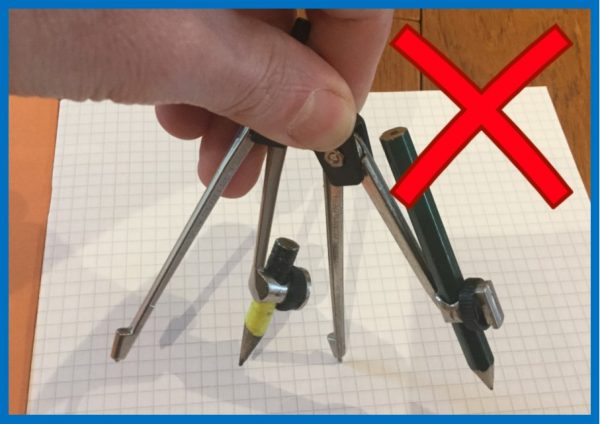
2. USE A TEENY WEENY PENCIL: Long pencils get stuck against your hand and prevent the compass moving properly, but a tiny stubby pencil can stay in the compass without getting entangled in your pencil case. If you snap a small piece off the end of another pencil and resharpen the end your Mum will probably not notice. I’ve been using the same compass pencil for years, and it still has plenty of length left.
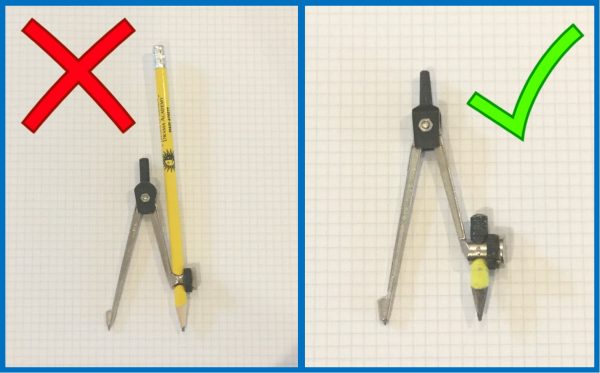
3. TO PLACE THE COMPASS at the correct point: hold it right next to the spike – not at the top. Jam the spike hard into the page to stop it slipping. TO DRAW THE ARC: the opposite applies: you now hold it at the top – not on one of the arms and certainly not on both arms at once. Avoid pressing too hard as this can make the compass open up as you draw.
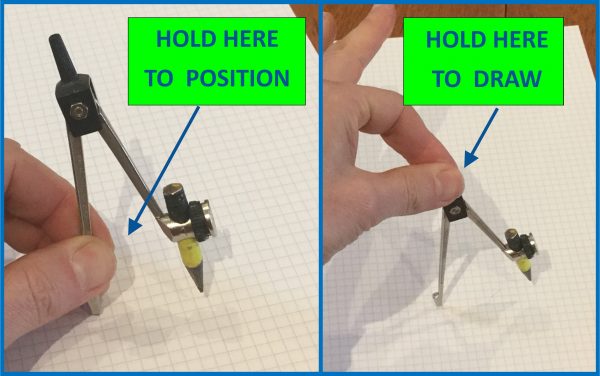
4. GCSE students can use CONGRUENT TRIANGLES to see how the constructions work. For instance: we can tell that this angle-bisection works because triangles OAB and OCB are congruent by SSS: so angle AOB=angle COB.
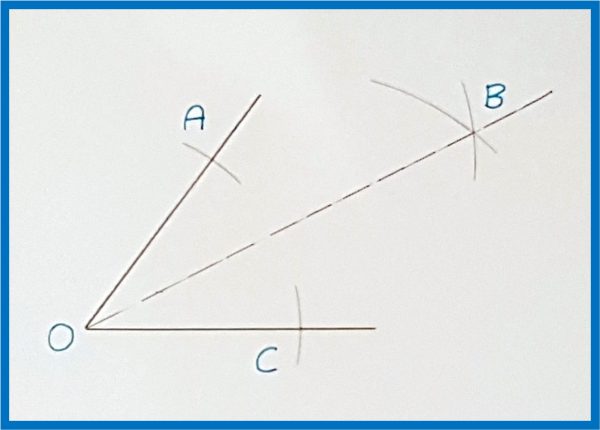
Now use congruent triangles to prove that this construction – DROPPING A PERPENDICULAR FROM POINT ‘P’ TO A LINE – works ok. Scroll down for a hint.
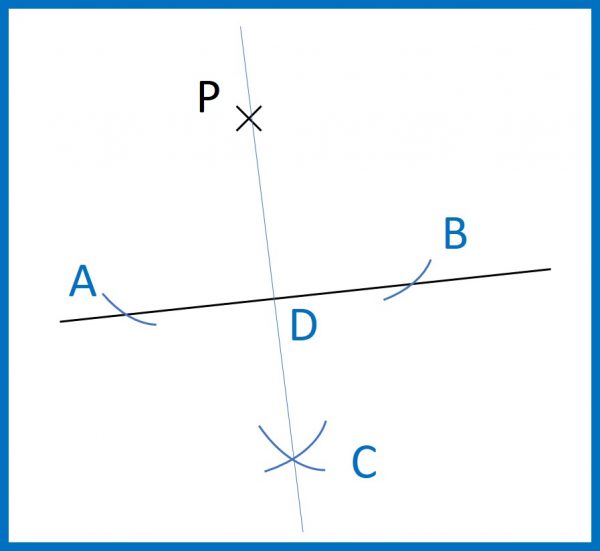
Drop a perpendicular from point P to a line
HINT: show that triangles PAC and PBC are congruent; deduce that angles APD and BPD are the same; now prove that triangles APD and BPD are congruent. It follows that AD=BD and that the angles at D are all $90^\circ$